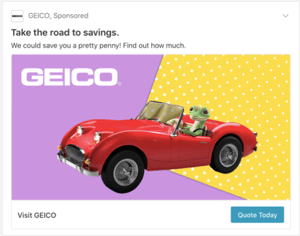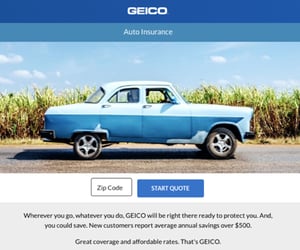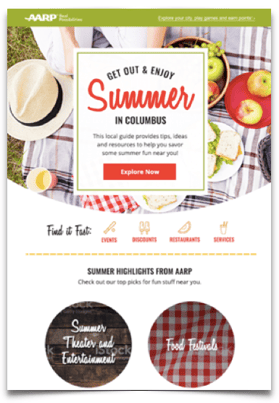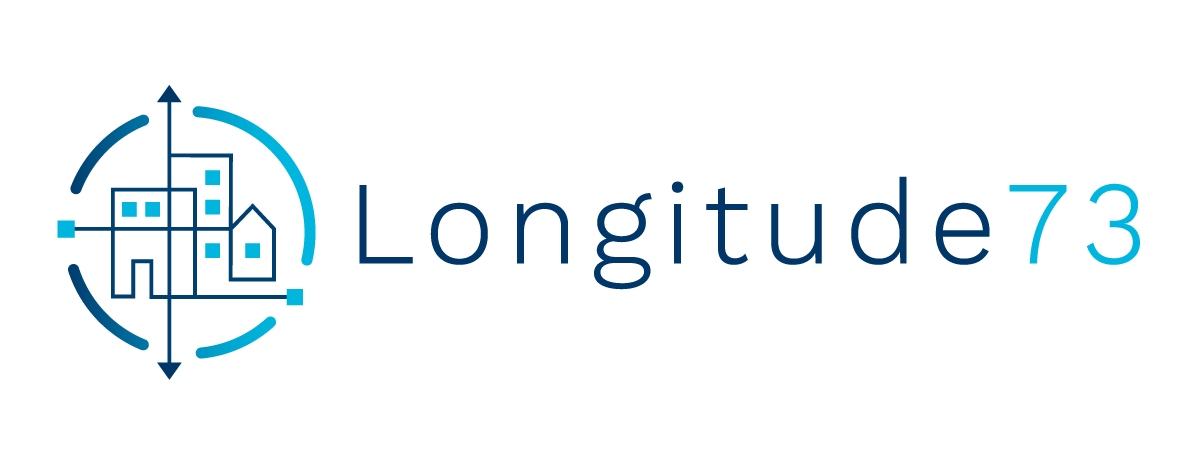The increased focus on “local” isn’t lost on most national marketers. But those same national brands have generally tended to view local marketing as inefficient and unscalable. So, what’s the trick to making local efforts pay off?
Let’s start with the key premise: “Local” allows brands to deliver higher relevance and value by aligning with their audience’s location and geographic context. Demonstrating knowledge of those elements helps brands enjoy higher engagement and other revenue driving results. Social media has been a key channel in this regard.
Up to now, Facebook has come closest in helping brands connect locally through its advertising opportunities. That is, if brands take the opportunity to tie their ads to business pages and events, rather than running an ad on Facebook that takes consumers to a corporate site upon clicking. With hyperlocal ads, brands can maintain a relatively “local” feel for their consumers.
Yet more recently, the social network Nextdoor has emerged as an even more powerful way for brands to engage on the local level.
What is “Nextdoor”?
Nextdoor is a social networking service for specific communities. It’s about neighbors connecting with each other, making recommendations, finding babysitters or a plumber, even giving a “heads up” about the coyote milling about the neighborhood.
What’s unique about Nextdoor is that you must verify that you’re actually part of that community. So, where Facebook is about connecting you to friends, no matter where they live, Nextdoor connects you to people actually living in your neighborhood.
The opportunity for businesses to engage with the roughly 190,000 neighborhoods that cover 90% of the country is enticing. After all, Nextdoor has the potential to target actual people on a particular street, in a particular town. How’s that for granular marketing?
Hold up a minute!
Though you might be ready to jump right in, there are a few issues to recognize when it comes to reaching specific communities via Nextdoor.
- The targeting capabilities aren’t quite there to ensure that every neighbor will see your ad. That can create significant waste for some brands
- Ads only come in the form of sponsored content posts
- Small and midsize brands need not apply just yet (though that’s likely to change soon)
The Trick for Making A Nextdoor “Sponsored Post” Work Harder…
Remember that the whole point of Nextdoor is about the neighborhood. If you’re going to leverage this emerging platform, make sure that your content is highly relevant to that particular local audience. Here’s a good example of how a national brand can effectively reach out:
- Lowe’s – The sponsored post talks about a sale that a particular department is having on, say, household appliances. Shoppers are encouraged to visit their nearby location (address included). It’s local, relevant and drives people to their stores.
Now let’s contrast that with a couple of ads that don’t quite meet the mark.
- Ring Security – This home security company (owned by Amazon) is famous because of their doorbell camera. They’ve run sponsored posts talking about “porch pirates” in your town. That’s great click bait! Problem is, you end up on a blog about some town in Arkansas. That’s more than a disconnect since Nextdoor is supposed to be about “my” neighborhood.
- Geico – The insurer has a generic ad with no attempt at localization. Further, if you click on it, you’re directed to a landing page that asks for your zip code.
a. This totally defeats the purpose of working with Nextdoor
b. Where is the local relevance?
c. What does it say to the audience when you show them an ad on their
“neighborhood” site – then asks for their zip code?!


Why these poor choices? It could be a quick way to test ad performance, but the results will be wildly skewed because of the lack of effort at connecting with the local audience. Because, after all, this is a national ad.
Enter “Local Content Optimization”
Local Content Optimization is a technology solution that allows marketers to improve their marketing efforts specifically at the “neighborhood” level. By locally-contextualizing a brand with an ever-current mix of owned content and as needed with content from many local/lifestyle categories, marketers can deliver a rich, relevant experience.
Best of all, it's scalable.
Our smart landing pages will dramatically improve the post-click experience and the results of advertising and email campaigns.
Here’s how:
- Optimize the Sponsored Post Ad shell to be a location-relevant template
- Select your neighborhoods for the campaign
- Deliver a post-click landing page that maintains the location relevance in headline, body content, and finally, the lead/conversion action
Now, when someone clicks on your ad, they hit a landing page that works to accomplish your action, but more importantly, bridges the local relevance all the way through that action.

Here’s an example of how it can work: AARP sends an email to its nearly 38 million members talking about “Getting Out to Enjoy Summer Fun.” Because they know the zip code of a particular member, it adds “…In Columbus.”
A crucial piece of the equation happens next: when the member clicks, they don’t land on a national “Summer Fun” page for the entire United States; instead they land on a Columbus-specific page, populated with numerous ways to enjoy the season in that specific area.
Expected engagement levels between these two experiences are dramatic. Consider the increased relevance and actionability of town-specific version vs. the national versions. Now imagine this taking place in all 29,000+ cities and towns across every initiative throughout the year.
Reviewing the Ring and Geico posts mentioned above versus the AARP example, imagine what could’ve been accomplished. Smart landing pages that recognize Nextdoor zip codes are the kind of pages that deliver the most engaging experience.
Thanks to Local Content Optimization, marketing personalization to cities and towns at every geographic level is both scalable and efficient.
So, if you’re looking to test out Nextdoor advertising, remember to deliver local relevance in your sponsored posts and throughout the post-click experience. This is the smart way to maximize your results for your brand and deliver great ROI!
Reach out to us to learn more!


